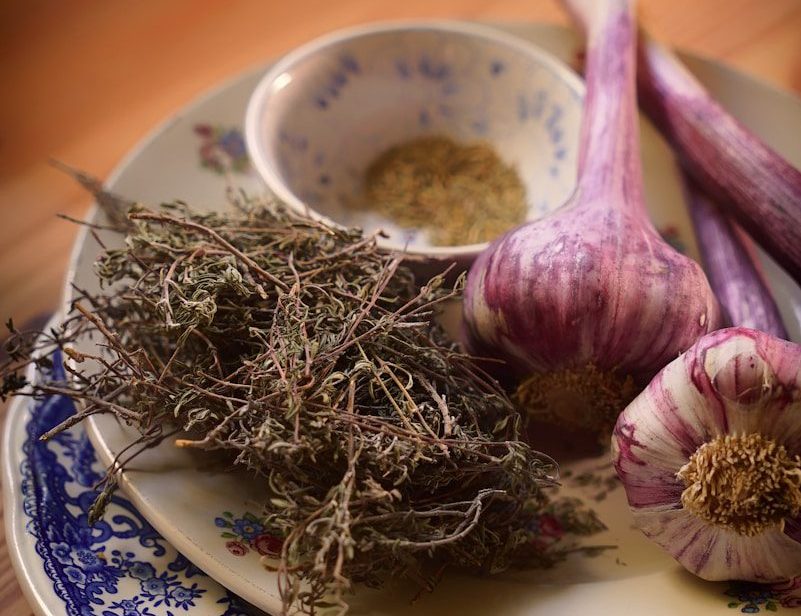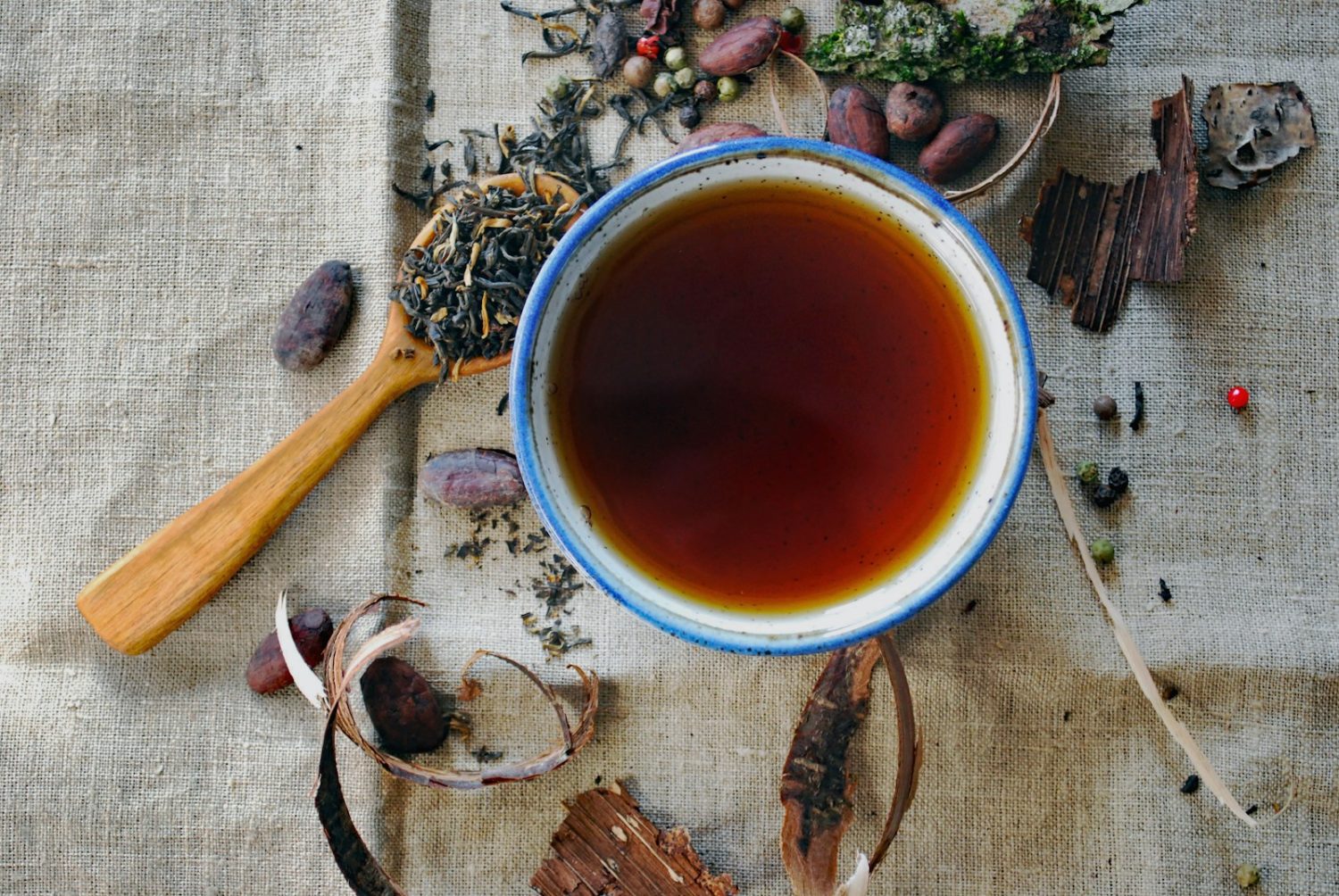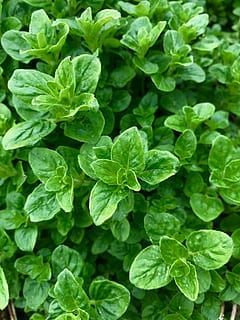
A calm day can turn rough fast. An itch flares. Your stomach feels tight. Night comes and sleep will not. The good news sits close. Relief grows in your garden and waits in your kitchen. We can make simple cups, gentle compresses, and soothing steams in minutes. In other words, you already have what you need to feel better—without fuss, fear, or hard-to-find ingredients.
This is your friendly, step-by-step guide. We’ll use common herbs and pantry staples. We’ll keep doses clear and the tone steady. We’ll also keep safety in sight, because comfort and care should always travel together. Use what fits your day. Skip what doesn’t. Your notes will teach you what helps most.
Educational only, not medical care. Seek help fast for trouble breathing, swelling of lips or tongue, chest pain, black stools, vomiting blood, severe rash, or lasting symptoms. Children under one year must not have honey. If you are pregnant, nursing, caring for a child, or take daily medicines, check with your clinician before new herbs.
Garden Remedies That Work Now
Let’s start with quick wins you can make today. We’ll group them by need—itch, indigestion, and insomnia—so you can jump to the part you want. Keep it simple. Choose one remedy. Try it. If it helps, keep it. If not, switch to another. Our bodies are different, and that’s okay.
ITCH RELIEF (gentle, fast, and plant-forward)
- Cool Oat Soak (whole-body calm).
Blend plain rolled oats to a soft powder. Stir 1 cup into a tub of lukewarm water. Soak 10–15 minutes. Pat dry.
Why it helps: Oats form a silky gel that soothes skin.
When to use: Dry itch, mild rashes, heat rash, winter skin. - Aloe Vera Leaf Gel (spot relief).
Cut a fresh aloe leaf. Slice lengthwise. Scoop the clear gel (avoid the yellow sap near the skin if you are sensitive). Chill the gel 10 minutes, then smooth a thin layer over clean skin.
Why it helps: Cool, moist, and calming.
Where it shines: Bug bites, mild sunburns, razor burn. - Plantain Leaf Poultice (yard-to-skin helper).
Rinse clean leaves of plantain (Plantago major or P. lanceolata). Bruise with the back of a spoon until juicy. Press on the bite or sting 10–15 minutes. Cover with a clean cloth if needed.
Why it helps: Plantain’s soothing juice calms the area and reduces the urge to scratch.
Good for: Fresh bites, nettle stings, garden scrapes. - Calendula Cool Compress (petals to the rescue).
Steep 2 tablespoons dried calendula petals (or a loose handful fresh) in 1 cup hot water for 15 minutes. Cool to room temp. Soak a clean cloth and press on the area for 10 minutes.
Why it helps: Gentle, skin-friendly comfort.
Use for: Dry, irritated patches after you wash and pat dry. - Baking Soda + Oat Paste (itchy patches).
Mix 1 tablespoon oat powder with 1 teaspoon baking soda and enough water to make a spreadable paste. Apply 10 minutes. Rinse and pat dry.
Note: Skip on broken skin. - Diluted Apple Cider Vinegar Dab (sweat or heat itch).
Mix 1 tablespoon vinegar with 10 tablespoons cool water. Dab with a cotton pad. Rinse after 5 minutes.
Note: Do not use on open skin. Stop if it stings. - Garden Peppermint Cool Cloth (for those who tolerate mint).
Steep a small handful fresh peppermint in 1 cup hot water for 10 minutes. Cool. Soak a cloth and press briefly.
Caution: Peppermint can irritate some folks. Patch-test first. Avoid for infants and pets.
Itch safety we keep in mind: Wash poison ivy oils off skin and gear with soap and cool water quickly. Do not scratch until skin breaks. If you see streaking redness, pus, fever, or intense swelling, get medical care. For severe allergy signs (wheezing, throat tightness, fainting), call emergency care.
INDIGESTION SOOTHERS (steady, simple, stomach-kind)
- Ginger & Honey Warm Cup (post-meal ease).
Simmer 4–6 thin ginger slices in 1 cup water for 8–10 minutes. Cover 5 minutes, strain, and add 1–2 teaspoons honey. Sip warm.
Why it helps: Supports smooth movement so meals don’t linger.
When to use: After heavy meals, on queasy days. - Fennel Seed Chew or Tea (sweet finish).
Chew 1/2–1 teaspoon fennel seeds after meals. Or lightly crush 1 teaspoon seeds, steep in 1 cup just-boiled water for 10 minutes, and sip.
Why it helps: Calms gas and gentle cramping.
Tip: A dash of caraway or dill seed plays well here too. - Chamomile + Lemon Balm Calm Cup (stress-belly ally).
Steep 1 teaspoon chamomile and 1 teaspoon lemon balm in 1 cup hot water for 7–10 minutes, covered. Strain, add honey if you like, sip slowly.
Why it helps: Soothes nerves and belly at the same time. - Basil Digestive Sip (mint-free, reflux-friendly for many).
Tear 4–6 fresh basil leaves. Steep in warm water or warm almond milk for 5–7 minutes. Strain and sip.
Why it helps: Gentle, aromatic ease without mint’s valve-relaxing effect. - Warm Rice Water (plain and kind).
Simmer 1/4 cup rice in 2 cups water for 15 minutes. Strain the liquid. Sip warm with a pinch of salt.
Why it helps: Light, soothing, and easy when everything feels touchy. - Apple Cider Vinegar Honey Tonic (only if it suits you).
Stir 1 teaspoon vinegar and 1–2 teaspoons honey into 1 cup warm water. Sip slowly.
Note: Skip if you have reflux or sensitive enamel. It helps some, not all. - Bitter Greens “Pre-Meal” Bite (tiny but useful).
Take a few leaves of arugula, dandelion, or a small slice of lemon zest before meals. Chew well.
Why it helps: Signals the gut to prepare for food. Tiny dose is enough.
Indigestion habits that stack the win: Small meals. Sit tall. Chew well. Leave two to three hours between dinner and bed. Walk 10–15 minutes after eating. Sleep on your left side if nights are hard. If peppermint worsens your burn, skip mint and use lemon balm or chamomile instead.
When to see a clinician for stomach issues: Heartburn more than twice a week, trouble swallowing, weight loss without trying, black stools, severe pain, or chest pressure. Quick care is wise care.
INSOMNIA HELPERS (night rituals that truly soothe)
- “Goodnight Garden” Tea (soft, cozy, effective).
Mix 1 teaspoon chamomile + 1 teaspoon lemon balm + 1/2 teaspoon dried lavender buds. Steep in 1 cup hot water for 7–10 minutes, covered. Strain. Add honey if you like.
Why it helps: Eases body and mind without a groggy hangover. - Warm Foot Soak with Lavender (body signal: bedtime).
Add a small handful dried lavender to a basin of warm water. Soak feet 10 minutes. Pat dry. Pull on soft socks.
Why it helps: Heat and scent shift the nervous system toward rest.
Note: If you use essential oil, one drop swirled into a spoon of carrier oil, then into the water, is plenty. Keep oils away from pets and eyes. - Lavender Pillow Sachet (scent, not sip).
Fill a small fabric pouch with dried lavender. Tuck near your pillow. Squeeze once to refresh scent as you settle.
Why it helps: Gentle aroma cues the brain that night has begun. - Banana-Oat Evening Bowl (sleep-steady snack).
Simmer 1/3 cup oats in 2/3 cup water or almond milk. Stir in half a ripe banana, mashed. Sprinkle cinnamon.
Why it helps: Light, calm fuel so your stomach stays quiet. - Passionflower or Valerian?
If you know and tolerate them, a light cup can help. But start low, go slow, and skip in pregnancy or with sedatives unless your clinician agrees. Many of us sleep well with chamomile, lemon balm, and lavender alone. In other words, begin gentle.
Night habits that make sleep stick: Dim lights an hour before bed. Set your phone aside. Keep the bedroom cool, dark, and quiet. If thoughts race, write a “tomorrow list,” close the notebook, and breathe out slow. Try this four-square breath: inhale 4 counts, hold 4, exhale 4, hold 4—five rounds. If snoring, gasping, or morning headaches are common, ask about sleep apnea. Good sleep is health, not a luxury.
Simple “mix and match” plans you can copy today
- Itchy Evening Reset (15 minutes): Cool Oat Soak → pat dry → thin layer Aloe Gel → soft cotton shirt.
- Calm Belly Afternoon (10 minutes): Fennel Seed Tea → 10-minute walk → sit tall, loose waist.
- Sleep-Ready Hour (30–45 minutes): Warm Lavender Foot Soak → Goodnight Garden Tea → lights dim → lavender sachet squeeze → bed on time.
Grow, Store, and Stay Safe
Your remedies last longer when you grow smart, harvest right, and store well. Let’s keep this easy and practical.
What to grow (small list, big payoff)
- Aloe vera (bright, indirect light).
Loves a sunny window or warm porch. Water deeply, then let soil dry. Harvest outer leaves when thick and heavy. Store cut gel in the fridge up to 3 days. - Calendula (full sun).
Blooms from spring to frost. Pick flowers as they open. Dry on a screen in shade. Great for compresses and salves. - Chamomile (sun to part sun).
Harvest blooms at peak. Dry gently. A little goes a long way for tea. - Lemon balm (part sun, in a pot).
It spreads. Keep it contained. Pinch tips often for fresh growth. Use fresh or dry fast for jars. - Lavender (full sun, sharp drainage).
Prune lightly after bloom. Dry flower spikes in bundles. Use for sachets, baths, and light room scent. - Fennel (full sun, well-drained soil).
For seeds, let umbels brown on the plant. Clip into a paper bag to finish drying, then store. - Basil (full sun, warm).
Pinch blooms to keep leaves tender. Perfect for evening digestif sips. - Plantain (common yard herb).
Grows almost anywhere. Harvest clean leaves away from streets. Rinse well. - Ginger (bright shade).
Start a knobby piece with eyes in a wide pot. Keep evenly moist. Harvest a knob and replant the rest.
How to dry and store herbs
- Pick on a dry late morning after dew lifts.
- Rinse fast, shake dry, and pat with a towel.
- Dry in a warm, shaded, airy place (not in harsh sun).
- When crisp, jar them in glass. Label with plant and date.
- Store cool and dark. Most herbs keep 9–12 months when dried well.
Infused oils and simple salves (skin helpers you’ll love)
- Calendula or Plantain Infused Oil:
Fill a clean jar halfway with thoroughly dried petals or leaves. Cover with olive oil by an inch. Stir to release bubbles. Cap and infuse 2–4 weeks in a warm, shaded spot, shaking every few days. Strain. Label.
Use: Thin layer on clean, intact skin. Avoid eyes and open wounds. - Basic Salve (stays where you put it):
Warm 1/4 cup infused oil with 1 tablespoon beeswax in a water bath until melted. Stir and pour into a small tin. Cool and label.
Shelf life: About 1 year if kept cool and clean.
Kitchen staging that makes remedies happen
- A “comfort shelf” with jars of dried chamomile, lemon balm, lavender, and fennel.
- Ginger in the freezer (grates easily while frozen).
- A sticky note on the kettle: “Warm first.”
- A dedicated gargle mug and a small jar of sea salt.
- A clean washcloth stack in the bathroom for compresses.
Safety we keep top of mind
- Allergies: If you react to daisies, skip chamomile and calendula.
- Honey: Not for children under one year.
- Essential oils: Strong. Do not take by mouth. Do not use undiluted on skin. Keep away from pets, especially cats. Vent rooms and stop if you feel irritated.
- Licorice root: Avoid with high blood pressure, kidney or heart disease, pregnancy, or with certain medicines.
- Skin care: Do not put herbs on deep or infected wounds. If redness spreads, warmth increases, or pain worsens, seek care.
- Stomach care: Severe or lasting symptoms need evaluation. Home care supports healing; it does not replace medical guidance.
- Sleep care: If insomnia is tied to snoring, choking, or gasping, get checked for sleep apnea. Herbs help, but oxygen wins first.
Troubleshooting (fast fixes)
- Tea tastes “too strong.” Use fewer herbs, cooler water, or shorter steep times.
- Skin got red after a compress. You may be sensitive or the tea was too strong. Rinse, rest, and dilute next time.
- Peppermint worsened heartburn. Switch to lemon balm or chamomile.
- Bath made skin tight. Shorten the soak and moisturize after with a plain, fragrance-free lotion or a thin layer of infused oil.
- Still itchy after a week. Reassess. Could it be detergent, wool, new skincare, or a plant exposure? Remove the source and see a clinician if needed.
Tiny trackers that teach you what works
- Itch log: “What touched my skin?” “What I tried.” “What helped.”
- Belly log: “What I ate.” “How I sat.” “Which cup helped.”
- Sleep log: “Lights-out time.” “Screen-off time.” “Tea used.” “Wakeups.”
After more than a few days, patterns appear. You gain clarity, and your plan gets easier.
Five-minute weekly reset
- Refill tea jars.
- Check your salve tin.
- Pick and dry a small batch of thyme, lemon balm, or lavender.
- Wipe the kettle.
- Put a fresh sachet by the pillow.
Small tasks keep the whole system smooth. Instead of big chores, you keep a gentle rhythm.
A quick “garden-to-care” toolkit
- Kitchen scale or measuring spoons
- Kettle and two strainers (fine mesh + cloth)
- Two pint jars with lids
- Clean tins for salve
- Label tape and a marker
- Soft washcloths and a small basin
- A notebook and a calm pen
When tools are close, care happens fast. That is how you turn good ideas into daily comfort.
Quiet Skin, Calm Stomach, Rested Nights
This is the heart of garden care. We use simple plants and steady habits. We brew, soak, sip, and rest. We choose kind methods first. We listen to our bodies and adjust. In other words, we let nature help us in small, honest ways—right where we live.
Itch meets oats, aloe, plantain, and calendula—and steps back. Indigestion meets ginger, fennel, basil, and chamomile—and settles down. Sleepless nights meet lavender, lemon balm, and soft, evening light—and soften into rest. After more than a few days, you’ll know which cup or compress is your best match. You’ll keep those herbs close. You’ll feel the difference in your skin, your stomach, and your sleep.
So let’s begin tonight. Warm the kettle. Pick a sprig. Stir in a spoon of honey. Press a cool cloth where it bothers you. Dim the lights. Then breathe. These are small moves, but they add up. Your garden—and your kitchen—are ready to help, one gentle ritual at a time.



